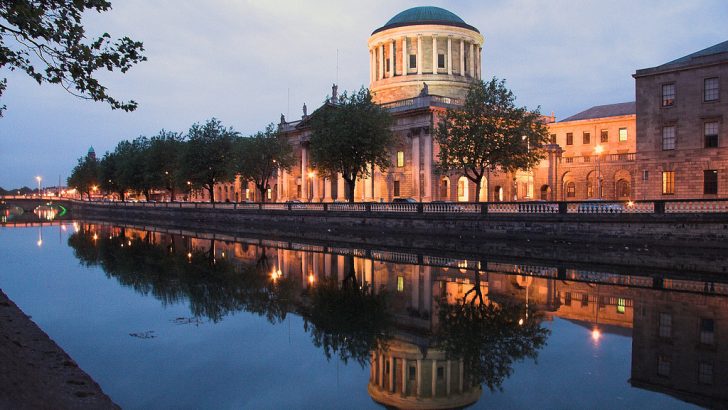It is no exaggeration to say that the Irish State is aggressively hostile to the rights of the unborn child. It is a level of hostility rare to find in any other Western country in recent times, including countries that have permitted abortion on widespread grounds for decades.
In most countries abortion is introduced either by Act of Parliament or by a court ruling. The entire apparatus of the State usually does not need to be mobilised to destroy the fundamental rights of the child in the womb.
But here in Ireland, because of the pro-life amendment, the State is having to show great determination to eliminate its rights. To this end, it has had to launch a vast propaganda campaign aimed at the public. For the most part it is aided and abetted in this by our media.
The State could have adopted a more neutral position (or indeed a pro-life position). It could have left it entirely up to civil society, and certain individual politicians, to decide upon their stance and to campaign, or not campaign, for or against the right to life.
But no, aside from some of the parties allowing a free vote on the issue (because they had no other practical choice), the Government and the State have bent themselves towards eliminating the rights of the unborn. When most Government Ministers speak on this – especially Health Minister Simon Harris – it is as if the unborn child does not exist at all.
But what really convinced me of the determined, deep-seated hostility of the State towards the unborn child was the case that appeared before the Supreme Court last week.
Appeal
The Supreme Court, at the insistent urging of the State, met early to hear the appeal by the State of a High Court ruling that the rights of the unborn in the Constitution extended beyond Article 40.3.3 in which the right to life of the unborn is to be found.
If the High Court ruling by Mr Justice Richard Humphreys is upheld (we will know in the next few weeks), it would be something of a disaster for the Government because it would mean its attack on the right to life would have to encompass more than Article 40.3.3.
If the unborn has rights that are to be found in other parts of the Constitution, including the children’s rights amendment of 2012, then the Government will have to replace the Eighth Amendment with a provision eliminating the rights of the unborn from all parts of the Constitution.
The High Court case involved a Nigerian man whose Irish partner was pregnant with their baby. He was facing deportation and his lawyers argued that his unborn child did not alone possess a right to life, but other rights, including a right to the presence and care of its father.
Mr Justice Humphreys ruled that the unborn child has rights under the children’s rights amendment of 2012, in other words, that the unborn child was a child, full stop, and did not have to wait until birth to become a child with rights.
This could not be more contrary to the view of, for example, our Minister for Children, Katherine Zappone, who clearly understands in her own mind that she is solely the Minister for born children. Her brief, as she reads it, does not extend to the child in the womb.
But Minister Zappone’s view of the non-rights of the child in the womb fits in very easily with the view of this Government as a whole, and the Irish State as a whole.
When the children’s rights amendment was passed in 2012, the last thing the Government had in mind was that it would come back to bite them in the form of a High Court ruling that ‘child’ meant the unborn child also.
Therefore, from the State’s point of view it is imperative that the Supreme Court overturn the High Court ruling and declare that, aside from Article 40.3.3 dealing with the right to life, the Irish Constitution in no other way protects the unborn child.
If it wins its appeal, and then Irish people vote down the right to life, that will leave the unborn children utterly without constitutional protection, and that is exactly how the State wants it. What could be more hostile than this?
Appearing before the Supreme Court, lawyers for the State argued that: “Birth is the bright line event, you fall one side or the other.” That is to say, birth is the event that triggers your rights. If you are even seconds away from birth you have no rights, aside from the right to life, which the Government, as mentioned, wants to erase.
Amazingly, the State also argued that the unborn is not even a human being until birth.
Invislble
As Counsel for the opposing view put it, the position of the State is that, constitutionally speaking: “If you take away the Eighth Amendment, the foetus up to birth is entirely invisible.” And that is, indeed, the State’s view, with the right to life also to be eliminated if it gets its way.
Thus, we now see, nakedly exposed, the ultra-hostile approach of the State to the rights of the unborn. If the pro-life amendment goes, the State does not want anyone ever again going into an Irish court and arguing in favour of the unborn using other provisions of the Constitution, and especially not the children’s rights amendment of 2012. The unborn child is to be considered neither a child, nor a human being.
Imagine if the State were to argue this way against the rights of some other group, say a racial or religious minority? We would instantly recognise how deeply aggressive, how utterly hostile, indeed how deeply immoral its position was. It could not be argued otherwise.
But this is where the Irish State is now at. It has declared the unborn to be, in effect, a non-being, a life constitutionally unworthy of life, or any other rights, and to be treated accordingly.
It will be up to us, the Irish people to say otherwise, when we vote in the coming referendum.
David Quinn’s new book is How we Killed God (and other Tales of Modern Ireland) from Currach Press.


 David Quinn
David Quinn Legal Battleground: The Four Courts
Legal Battleground: The Four Courts 